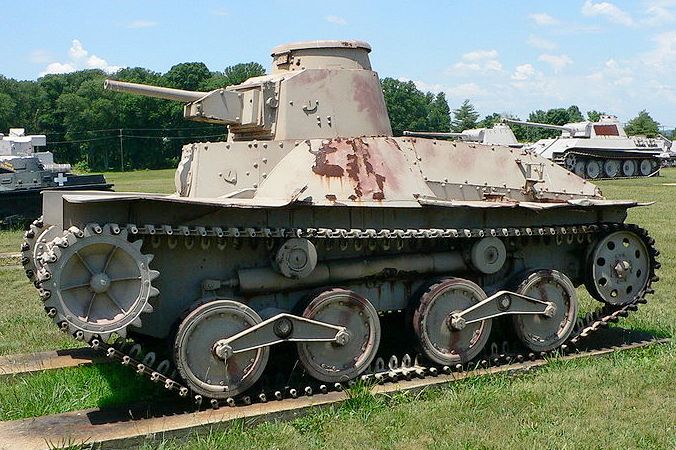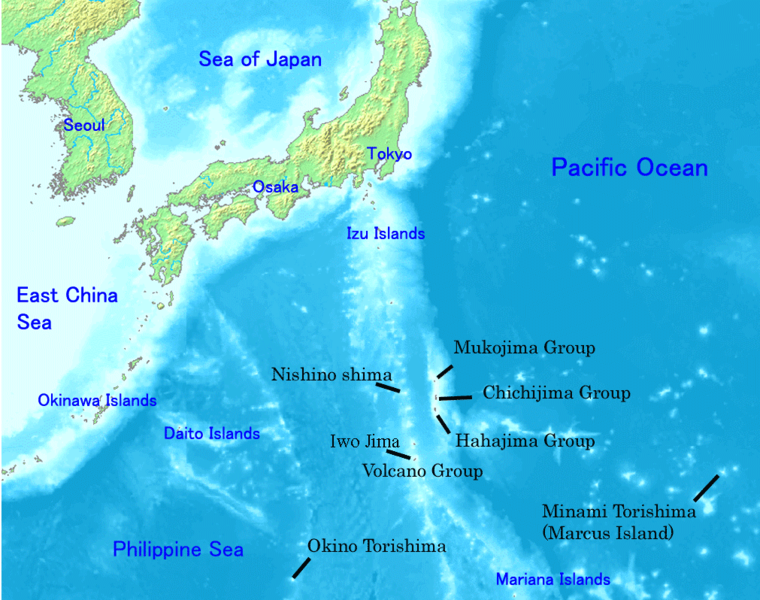Dai 1 Go-gata Yusokan
IJN No. 1 Class Fast Transport
 (No. 1 Class Fast Transport T.5 by Takeshi Yuki)
(No. 1 Class Fast Transport T.5 by Takeshi Yuki)
IJN Transport T.2:
Tabular Record of Movement
© 2014-2015 Bob Hackett
Revision 2
10 February 1944:
Yokohama. Laid down at Mitsubishi Yokohama Shipyard as
Ship No. 2902, a 1,500-ton No. 1 class landing ship.
15 March 1944:
Numbered T.2.
6 May 1944:
Launched.
7 June 1944:
Reserve LtCdr (Cdr, posthumously) Arima Kunio (former
CEO of kaibokan OKINAWA) is appointed the Chief Equipping Officer.
25 June 1944:
Completed. LtCdr Arima is the Commanding Officer.
Attached to the Yokosuka Naval District.
14 July 1944:
At 1440, T.2 departs Tateyama for Chichi Jima and Iwo
Jima escorting convoy No. 3714, also consisting of HASSHO, KATASURAGAWA and
NISSHU MARUs, UNKAI MARU No. 10 and Landing Ship No. 105 escorted by kaibokan
CD-4, subchasers CH-50 and CH-51.
17 July 1944:
At midnight, UNKAI MARU No. 10 straggles behind the
convoy.
18 July 1944:
NW Of Chichi Jima. At about 0200, LtCdr Albert L.
Becker's (USNA '34) USS COBIA (SS-245) torpedoes and sinks UNKAI MARU No. 10 at
28-58N, 139-04E. 19 crewmen are KIA and her cargo of aircraft spare parts is
lost.
At 0650, COBIA attacks the convoy. At about 0700, Becker torpedoes and
sinks NISSHU MARU at 28-40N, 139-25E. She is carrying over 1,000 soldiers and
LtCol (Colonel,posthumously) Baron Nishi Takeichi's (1932 Olympic Equestrian
Gold Medalist) 26th Tank Regiment from Pusan, Korea, consisting of 600 men and
28 Type 95 "Ha-Go" light tanks. 48 IJA soldiers including two tankers, three
crewmen and 45 gunners are KIA. The other marus and the escorts rescue LtCol
Nishi and 1,247 soldiers, 127 Navy personnel and 74 crewmen. [1]
 (Type 95 "Ha-Go" light tank at the former United States
Army Ordnance Museum, Aberdeen, MD)
24 July 1944:
(Type 95 "Ha-Go" light tank at the former United States
Army Ordnance Museum, Aberdeen, MD)
24 July 1944:
Arrives at Yokosuka.
29 July 1944:
T-2 and T-4 depart Tateyama for Chichi Jima, escorting
convoy No. 3729 also consisting of ENJU, HOKKAI, KYUSHU, SHOGEN and TONEGAWA
MARUs and UNKAI MARU No.7 escorted by destroyer escort MATSU, flagship of the
2nd Convoy Escort Group's Commander Rear Admiral Takahashi Ichimatsu (40)(former
CO of TSUGARU), destroyer HATAKAZE, kaibokan CD-4 and subchasers CH-52 and
CH-51.
That same day, light carrier ZUIHO, escorted by destroyer FUYUTSUKI,
sorties from Yokosuka to provide air and anti-submarine cover for the convoy.
1 August 1944:
Ogasawara (Bonin) Islands. Convoy No. 3729 arrives at
Futami Harbor, Chichi Jima. Upon arrival some of the cargo ships depart for Iwo
Jima. Bad weather causes delays in unloading. ZUIHO and FUYUTSUKI, after
maintaining position near the Izu Shichito Islands, make for the West Inland
Sea.
2 August 1944:
T.2 departs Chichi Jima for an amphibious resupply
landing on Iwo Jima, but is unable to complete the mission because of bad
weather
3 August 1944:
T.2 returns to Chichi Jima.
 (Iwo Jima and the Ogasawara (Bonin) Islands.)
4 August 1944: Operation "Scavenger" – Aerial Bombardment of Iwo Jima and
the Ogasawara Islands:
(Iwo Jima and the Ogasawara (Bonin) Islands.)
4 August 1944: Operation "Scavenger" – Aerial Bombardment of Iwo Jima and
the Ogasawara Islands:
About 0930, an air raid warning is received from
Tokyo. All ships proceed to sea in convoy No. 4804. From 1030 on, the convoy is
attacked by three waves of aircraft of Rear Admiral (later Admiral) Joseph J.
Clark's (USNA '17) (former CO of USS YORKTOWN, CV-10) Task Group 58.1. The first
wave attacks the convoy 20 miles NW of Chichi Jima. Destroyer HATAKAZE suffers
rudder damage. At about 1100, kaibokan CD-4 is near-missed by bombs fore and aft
to starboard. She suffers slight damage with two men KIA. The Japanese claim
shooting-down several aircraft.
In the second raid, ENJU MARU is sunk with the loss of 21 passengers and
52 crewmen. The third strike occurs between 1600 and 1630, during which the
majority of the ships succumb to torpedo attacks from both sides of the convoy.
At 1254, Rear Admiral (later Admiral) Laurance T. DuBose's (USNA '13)
Task Unit 58.1.6 is detached to sink the cripples. Task Unit 58.1.6 consists of
CruDiv 13's USS SANTA FE (F) (CL-60), USS MOBILE (CL-63), USS BILOXI (CL-80) and
USS OAKLAND (CL-95), DesDiv 100's USS COGSWELL (DD-651), USS INGERSOLL (DD-652)
and USS KNAPP (DD-653) and DesDiv 91's USS IZARD (DD-589), USS CHARRETTE
(DD-581), USS BURNS (DD-588) and USS BROWN (DD-546).
About 25 miles NW of Muko Jima, Bonins. At 1930, MATSU is taken under
fire and sunk by shell fire of COGSWELL, INGERSOLL and KNAPP at 27-40N, 141-48E.
Later, the Americans overtake and sink TONEGAWA MARU. 83 crewmen and 61 troops
are KIA. HATAKAZE, CD-4, CD-12 and subchaser CH-51 escape.
Futami Port, Chichi Jima. T.4 is bombed and damaged by aircraft from
light carrier USS CABOT (CVL-29) at 27-07N, 142-12E. She floods and is stranded.
5 August 1944:
Aircraft from Rear Admiral (later Admiral-Ret) Joseph
J. Clark's (USNA '17) TG 58. 1 and Rear Admiral (later Vice Admiral) Alfred E.
Montgomery's (USNA '12) TG 58.3, supported by Rear Admiral DuBose's cruisers and
destroyers, repeat strikes on Chichi Jima and Haha Jima. Off Chichi Jima, USS
BUNKER HILL's (CV-17) planes damage T.2 and further damage T.4 at 27-07N,
142-12E.
Off Chichi Jima. Crippled T.2 hits a reef in stormy weather and sinks at
27-05N, 142-09E.
10 October 1944:
Removed from the Navy List.
Author's Note:
[1] Lt Col Nishi's 26th Tank Regiment was not resupplied with
light tanks until Dec '44. Nishi was KIA on Iwo in '45. He was portrayed in
Clint Eastwood's 2006 film "Letters from Iwo Jima."
-Bob Hackett
Back
to Fast Transport Page







